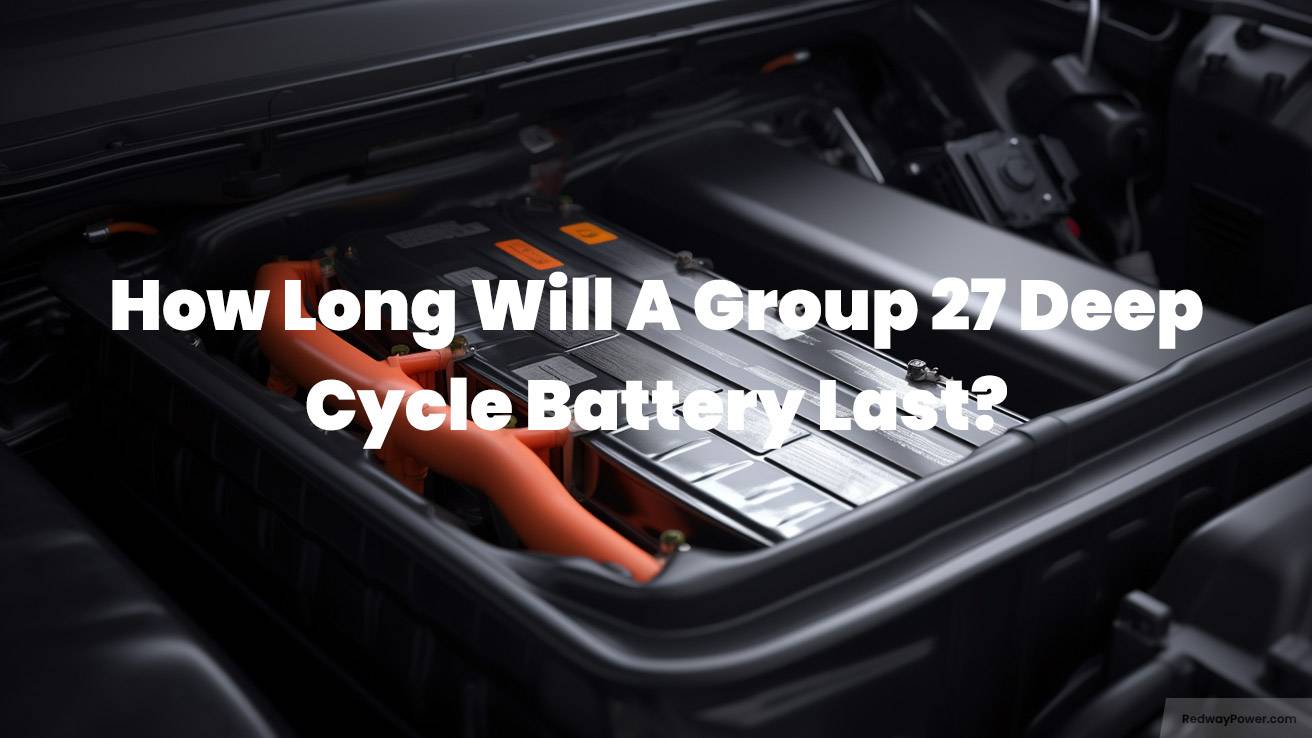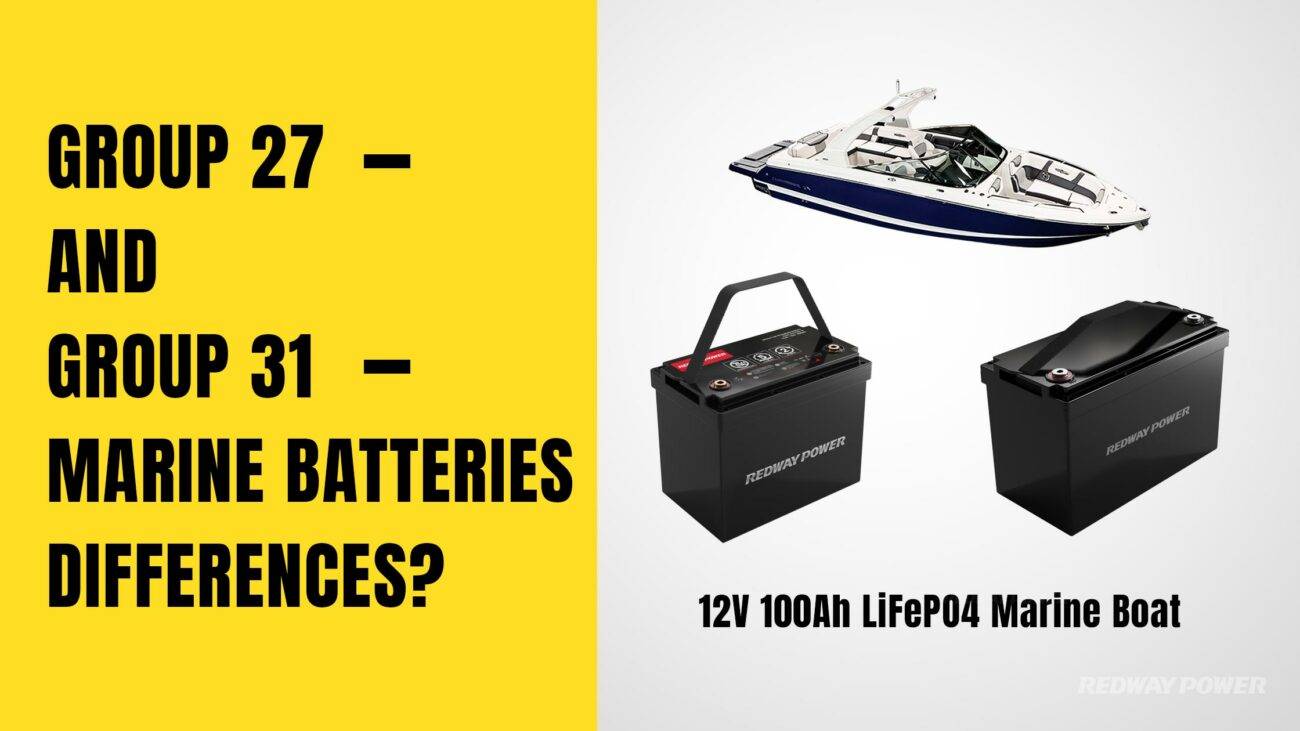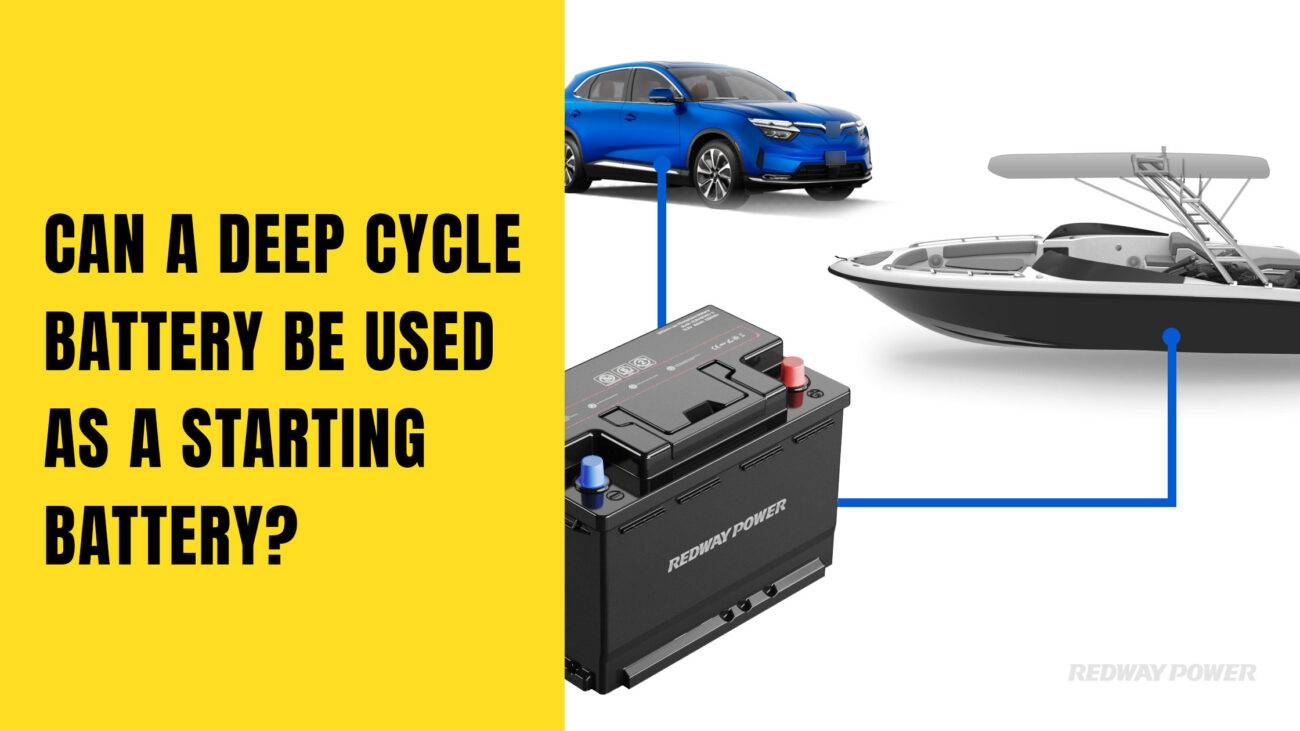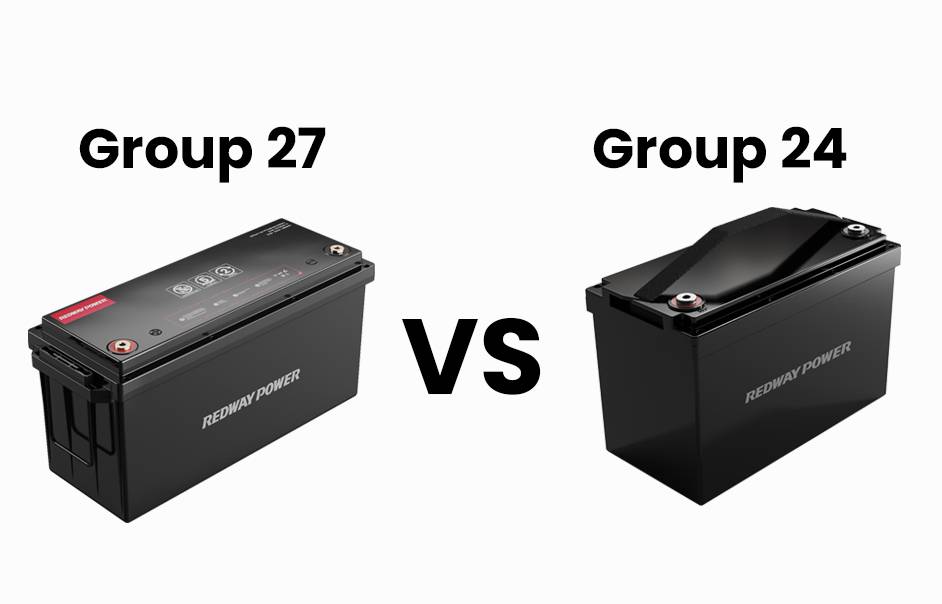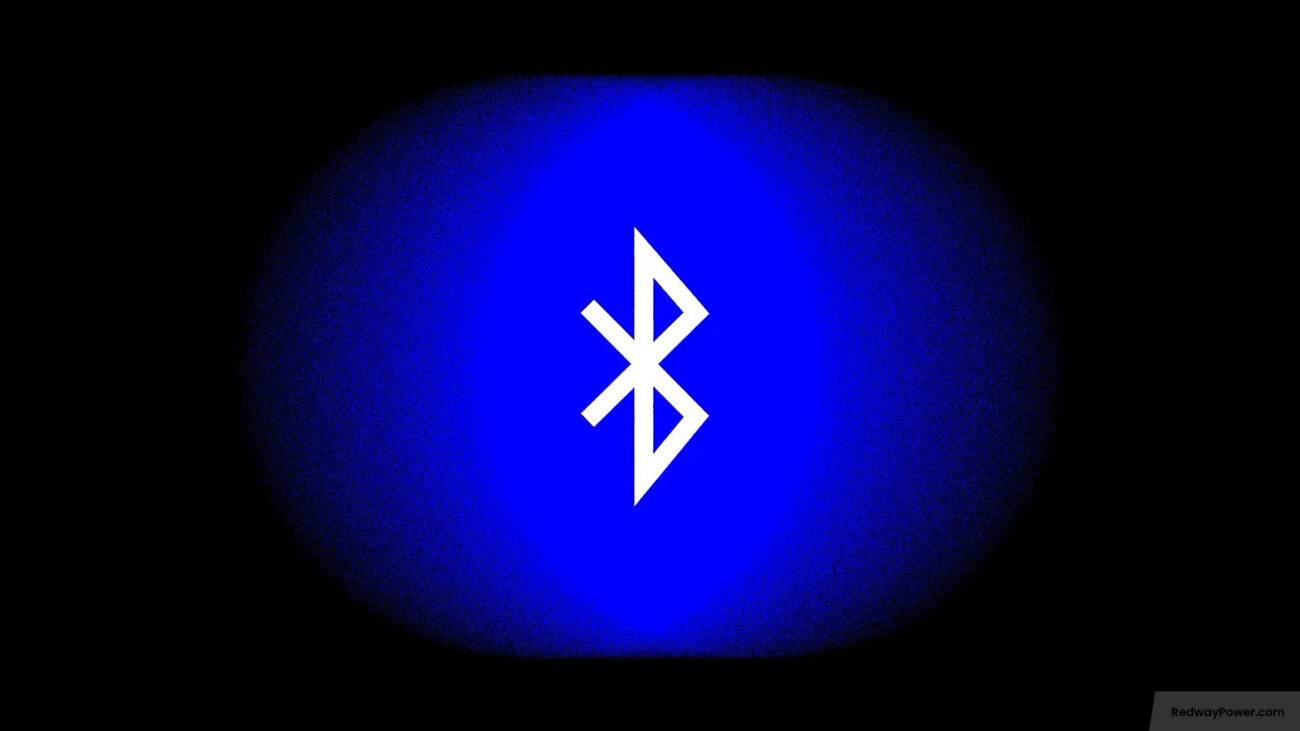Discover the lifespan of Group 27 Deep Cycle Batteries and what factors impact how long they last. Whether you’re planning a weekend getaway or a long journey, knowing battery life expectancy helps prevent unexpected battery failures. Let’s dive into this exploration!
What is a deep cycle battery?
A deep cycle battery serves as a reliable and consistent power source for a variety of larger devices, catering to the energy needs of diverse applications. Commonly found in golf carts, boats, electric cars, RVs, and off-the-grid living setups, these batteries play a vital role in providing sustained power where it is needed most.
Deep cycle batteries are not just energy storage devices; they are the backbone of power supply for a range of applications, making them indispensable components in various settings that rely on consistent and durable power sources.
What is Group 27 Deep Cycle Battery?
A Group 27 deep cycle battery refers to a specific size and type of deep cycle battery commonly used in various applications such as marine, RVs, golf carts, and electric vehicles. Group 27 batteries are characterized by their dimensions, which typically measure approximately 12 inches in length, 6.75 inches in width, and 9.25 inches in height.
These batteries are designed to provide sustained power over extended periods, making them ideal for applications that require frequent and deep discharges, such as trolling motors, RV appliances, and auxiliary power systems. They are known for their durability, reliability, and ability to withstand repeated charging and discharging cycles.
What kind of batteries are commonly used in golf carts, boats, and electric cars?
Batteries commonly utilized in golf carts, boats, and electric cars are deep cycle batteries. These batteries are specifically designed to provide a reliable and constant power supply for larger devices such as the aforementioned vehicles.
Factors That Affect Group 27 Deep Cycle Battery’s Life
Learn about the factors influencing the lifespan of your Group 27 deep cycle battery to ensure its longevity and optimal performance. Here’s a breakdown:
- Usage: Adhere to manufacturer guidelines to prevent excessive discharges or overcharging, which can shorten battery life.
- Temperature: Protect your battery from high heat and freezing temperatures, as extreme conditions can degrade its performance.
- Maintenance: Regularly clean connections, check water levels (if applicable), and ensure proper ventilation to extend the battery’s lifespan.
- Charging Practices: Avoid overcharging or undercharging, as they can impact the battery’s health and longevity.
- Environmental Conditions: Shield your battery from dust, moisture, and vibration to minimize wear and tear and prolong its life.
Calculating Battery Life Expectancy
Determining the life expectancy of a Group 27 Deep Cycle battery involves considering various critical factors. Here’s a simplified breakdown:
- Depth of Discharge (DOD): Maintain DOD between 50-80% to optimize battery performance and lifespan.
- Discharge/Charge Rate: Higher rates of discharge and charge can stress the battery, potentially reducing its longevity.
- Temperature: Extreme temperatures impact battery performance significantly, so it’s essential to regulate temperature conditions.
- Manufacturer Specifications: Consider the manufacturer’s specifications, including amp-hour rating and total expected cycles, for accurate estimation.
- Application-Specific Demands: Different applications have varying demands on deep cycle batteries, making it challenging to provide a universal estimate for lifespan.
Tips for Extending Group 27 Battery Life
Ensure your Group 27 Deep Cycle Battery lasts longer with these simple yet effective tips:
- Charge Correctly: Use a compatible charger and avoid overcharging or undercharging to maintain battery health.
- Maintain Water Levels: Regularly check and adjust electrolyte levels with distilled water to prevent dry cells and enhance battery performance.
- Avoid Deep Discharges: Minimize discharging below 50% capacity to prevent irreversible damage and extend battery life.
- Store Properly: Keep the battery in a cool, dry place away from extreme temperatures to slow self-discharge rates and preserve its condition.
- Clean Regularly: Remove corrosion on terminals to ensure good electrical contact and prevent performance issues.
- Regular Inspections: Routinely check for signs of damage like cracks or leaks to address any issues promptly and avoid further damage.
Following these tips will significantly prolong the lifespan of your Group 27 Deep Cycle Battery, ensuring optimal performance and protecting your investment.
Maintenance and Care for Group 27 Deep Cycle Batteries
To ensure your Group 27 Deep Cycle Battery remains in peak condition and lasts longer, it is essential to follow these simple yet effective maintenance tips:
1. Charge Correctly: Using a compatible charger and avoiding overcharging or undercharging are crucial steps in maintaining the health of your battery. Proper charging practices help preserve the battery’s longevity and performance over time.
2. Maintain Water Levels: Regularly checking and adjusting the electrolyte levels with distilled water is vital to prevent dry cells and enhance overall battery performance. This simple maintenance task can significantly extend the lifespan of your deep cycle battery.
3. Avoid Deep Discharges: Minimizing discharges below 50% capacity is key to preventing irreversible damage and extending the life of your battery. By following this guideline, you can ensure optimal performance and longevity for your Group 27 Deep Cycle Battery.
4. Store Properly: Storing the battery in a cool, dry place away from extreme temperatures is essential to slow self-discharge rates and preserve its condition. Proper storage practices play a critical role in maintaining the battery’s health and performance over time.
5. Clean Regularly: Removing corrosion on the terminals is necessary to ensure good electrical contact and prevent performance issues. Regular cleaning of the battery terminals is a simple yet effective maintenance task that can greatly impact the overall performance and durability of your deep cycle battery.
By incorporating these maintenance tips into your routine, you can significantly prolong the lifespan of your Group 27 Deep Cycle Battery, ensuring optimal performance and protecting your investment for years to come. Remember, proper maintenance practices are key to maximizing the efficiency and longevity of your battery.
Comparison with Other Battery Sizes
Choosing the right Group 27 deep cycle battery involves understanding its purpose, factors affecting lifespan, and maintenance requirements. Here’s a concise breakdown to help you make an informed decision:
- Purpose of Group 27 Batteries: Explore how Group 27 deep cycle batteries power RVs, marine vessels, and more, ensuring reliable performance in various applications.
- Factors Affecting Battery Life: Understand how usage patterns, temperature, charging practices, and maintenance impact the lifespan of Group 27 batteries, crucial for making informed decisions.
- Calculating Battery Life Expectancy: Learn a simple formula using amp-hour ratings and daily usage to estimate how long a Group 27 battery will last before needing recharging, aiding in decision-making.
- Tips for Extending Battery Lifespan: Discover valuable tips like avoiding deep discharges, proper charging techniques, and regular maintenance to maximize the longevity of Group 27 batteries.
- Maintenance and Care Importance: Recognize the significance of regular cleaning, proper storage, and comparative understanding of Group 27 batteries with other sizes, ensuring optimal performance over time.
By considering these practical aspects, you can confidently choose the right Group 27 deep cycle battery for your recreational vehicles or boats, ensuring reliable power and longevity.
FAQs
How is the lifespan of lead acid and lithium deep cycle batteries measured?
The lifespan of lead acid and lithium deep cycle batteries is typically measured in terms of cycles rather than time. For example, a lead acid battery can provide around 200 cycles based on a depth of discharge (DOD) from 100% to 80% capacity. On the other hand, deep cycle lithium batteries have a significantly longer lifespan, with some models capable of achieving over 2000 cycles or more. This difference in lifespan measurement underscores the superior longevity of deep cycle lithium batteries compared to lead acid batteries.
How do lithium deep cycle batteries differ from SLA batteries in terms of energy cells and circuitry?
Lithium deep cycle batteries differ from SLA batteries in terms of energy cells and circuitry in several key ways. In lithium deep cycle batteries, energy cells are utilized to provide sustained current output over extended periods, making them well-suited for cyclic and deep cycle applications. These energy cells are specifically designed to support prolonged use, offering efficient power delivery throughout the battery’s lifespan.
Moreover, the circuitry in lithium batteries plays a crucial role in ensuring optimal performance and safety. The circuitry includes built-in protections that regulate the amount of current that can be drawn from the battery, thereby preventing overloading and potential damage. It is important to note that the level of protection and specific features of the circuitry can vary among different lithium battery models, necessitating a careful review of technical documentation and specifications for comprehensive understanding.
What are the subcategories of deep cycle SLA batteries?
Deep cycle SLA batteries have two main subcategories: deep cycle gel and AGM (absorbent glass mat) deep cycle batteries. Gel batteries utilize a substance that transforms the electrolyte acid into a thick gel, making them non-spillable. These batteries are known for their superior heat distribution and off-gassing properties, resulting in better overall performance. On the other hand, AGM batteries feature a glass mat placed between the negative and positive plates to secure the electrolyte in place. The design of the glass mat not only prevents spills but also enhances the surface area of the plates, allowing for improved electrolyte distribution compared to traditional batteries.
Can high-rate batteries be used for deep discharge applications?
High-rate batteries can be used for deep discharge applications, but there are limitations to their effectiveness in such scenarios. While a high-rate battery can handle one or two deep cycles without significant damage as long as maximum discharge and charge rates are strictly followed, prolonged deep cycling can cause severe breakdown over time. Therefore, the suitability of using high-rate batteries for deep discharge applications ultimately depends on the design of the specific battery in question and how consistently it is subjected to deep cycling.
What classifies as a deep discharge for a battery?
A deep discharge for a battery is determined when a significant portion of its total capacity is utilized. Specifically, it is categorized as the discharge of approximately 80% to 100% of the battery’s total capacity.
What is depth of discharge (DoD) and state of charge (SoC) in relation to battery capacity?
Depth of discharge (DoD) is a measure of how much of a battery’s capacity has been utilized during a single discharge cycle. It represents the proportion of the total energy stored in the battery that has been consumed. A full discharge equates to 100% DoD, indicating that the battery has been completely drained of its stored energy.
On the other hand, state of charge (SoC) is a metric that reflects the remaining capacity or energy level within a battery. It indicates the percentage of the battery’s total capacity that is still available for use after a certain amount of discharge. A battery at 0% SoC is fully discharged and has no remaining usable energy left.
The relationship between DoD and SoC is inversely proportional – as the depth of discharge increases (towards 100% DoD), the state of charge decreases (towards 0% SoC). This means that the more energy drawn from a battery (higher DoD), the lower the remaining capacity (lower SoC) will be. Understanding both DoD and SoC is crucial in managing and optimizing the performance and longevity of batteries in various applications.
What is a full discharge cycle for a battery?
A full discharge cycle for a battery involves completely draining the battery’s capacity during use, followed by recharging it to reach its maximum capacity once again. The depth of discharge (DoD) is a key indicator that reveals the amount of the battery’s capacity utilized during a single discharge cycle. In the context of battery cycles, a full discharge is considered to occur when the DoD reaches 100%, meaning that the battery has been completely drained before being recharged. This process of fully utilizing the battery’s stored energy and then replenishing it back to its full capacity is what constitutes a full discharge cycle for a battery.
What are the deep cycle battery lines offered by Redway Power?
Redway Power provides a variety of deep cycle battery lines to meet different needs. They offer two SLA deep cycle battery lines: the PDC that caters to standard AGM deep cycle batteries and the DCG designed for deep cycle gel batteries. Additionally, Redway Power has two lines of lithium deep cycle batteries available – the PSL-SC which features series-capable lithium batteries, and the PSL-BT, which offers Bluetooth capable lithium batteries. Moreover, they also offer a line of lithium energy cells specifically used in the construction of custom deep cycle lithium battery packs.

